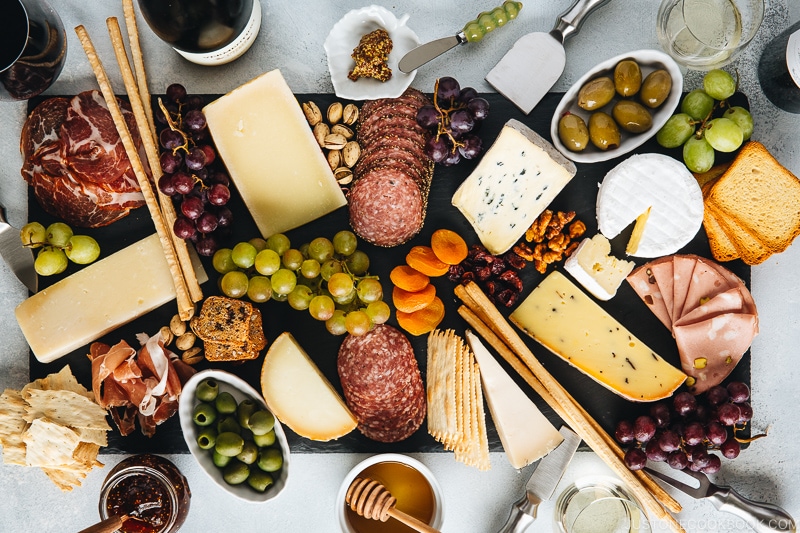A cheese board, more than just a platter of cheeses, is a work of art. It combines flavors, textures, and aesthetics to create a culinary masterpiece that tantalizes the taste buds and pleases the eyes. Whether you’re hosting a formal dinner party or a casual get-together, a well-designed cheese board can elevate your culinary experience. In this blog, we’ll explore the art of crafting the perfect cheese board, offering tips on cheese selection, accompaniments, and presentation.
- Choosing Your Cheeses
The foundation of any great cheese board is, of course, the cheese itself. Consider a variety of cheeses to cater to different palates. Here are some categories to include:
a. Hard Cheeses: Examples include Cheddar, Gouda, and Parmigiano-Reggiano. These provide a satisfying, firm texture and rich, nutty flavors.
b. Soft Cheeses: Brie, Camembert, and fresh goat cheese fall into this category, offering a creamy, velvety texture and mild, luscious flavors.
c. Blue Cheeses: Roquefort, Gorgonzola, and Stilton bring a pungent and creamy element to the board, with a characteristic blue mold vein.
d. Aged Cheeses: Complement your selection with aged cheeses like Manchego, Gruyère, or Pecorino, known for their intense flavors and crumbly textures.
e. Fresh Cheeses: Mozzarella, ricotta, and chevre add a refreshing and light element to balance the board.
- Accompaniments
A great cheese board is not just about the cheese; it’s also about the accompaniments. Consider adding a variety of sweet and savory elements to create a balanced and harmonious experience:
a. Fresh and Dried Fruits: Grapes, figs, apples, and pears provide a sweet, juicy contrast to the cheeses. Dried fruits like apricots and dates can add a chewy sweetness.
b. Nuts: Toasted almonds, walnuts, or pecans contribute a satisfying crunch and nutty flavor that pairs wonderfully with cheese.
c. Bread and Crackers: Offer a selection of artisanal bread, baguette slices, and a variety of crackers to serve as a vehicle for your cheese.
d. Spreads: Include honey, fruit preserves, or chutneys for an extra layer of flavor and sweetness.
e. Cured Meats: Thin slices of prosciutto, salami, or chorizo can add a savory component to your board.
- Presentation
The visual aspect of your cheese board is just as important as the flavors. Here are some presentation tips:
a. The Right Board: Choose a serving platter, wooden board, or slate as your canvas. The material and size can significantly impact the overall look.
b. Arrangement: Start by placing your cheeses on the board, distributing them evenly. Arrange the accompaniments around the cheeses, creating a visually appealing and balanced composition.
c. Garnishes: Fresh herbs like rosemary or thyme can be used as garnishes to add a touch of green and a pleasant aroma.
d. Labels: Consider using small labels or chalk markers to identify each cheese, allowing your guests to distinguish between the varieties.
e. Utensils: Provide a variety of cheese knives, spreaders, and small tongs to make it easy for guests to serve themselves.
- Wine Pairing
A cheese board is often best enjoyed with a complementary beverage. Wine is a classic choice, and the options are vast. Reds like Pinot Noir or Cabernet Sauvignon can pair beautifully with aged cheeses, while whites like Chardonnay or Sauvignon Blanc can enhance the flavors of soft cheeses. Don’t forget to offer a non-alcoholic option like sparkling water or juice for those who don’t drink alcohol.
